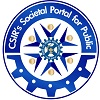Type:
Product
IPR Status:
Others
Secured In:
India
Application/uses:
ROV-500 is capable to operate at 500m under the sea with a speed of 2-4 knots and collect photographs of the underwater environment online as well as other useful information. It can be customized for various underwater applications.
Salient Technical Competing Features:
- Operating depth upto 500 m.
- Max. operating speed upto 4 knots
- Dimension:1200 mm(L)x800 mm (W) /1000 mm.(H)
- Propulsion 05 thrusters, 93 kfg (for), 52.2 kgf (rev)
- Config. Open-frame structure
- Ballast : Solid buoyancy pack
- Network based distributed control system & Navigational algorithms based on efficient data acquisition
- Ethernet communications, analog video transmission, acoustic telemetry for APOS
- Neutrally buoyant electro-opto-mechanical cable for power, signal & video
- Motorised winch system for cable handling with remote handset
- GUI based ROV control software using distributed system architecture.
Status of Commercialization:
Ready for licensing of Technology
Major Raw Materials To Be Utilized :
Standard materials commonly used for engineering product development, Standard components
Techno Economic:
Available on enquiry basis.
Technology Package:
Technical Specifications, Technical Manual, Operation Manual and Manufacturing Drawings
Content Details:
ROV-500 is embedded with advanced power, propulsion, navigation, and control systems. The propulsion system comprises thrusters for generating motion in different directions to control surge, sway, heave, pitch and yaw, while preventing the vehicle from rolling. A thin optoelectro-mechanical umbilical cable interface helps to send power and signal resulting online transmission of underwater video and images and useful information pertaining to temperature over depth. The vehicle is operated with joystick and can be programmed to carry out an underwater mission without human assistance.
Level/Scale of Development:
Prototype developed and conducted successful sea trial at a depth of 500 m
 Collaborating for a stronger future
Collaborating for a stronger future  Director CSIR-CMERI Inaugurates Indigenous Surgical Artery Forceps Manufacturing Setup
Director CSIR-CMERI Inaugurates Indigenous Surgical Artery Forceps Manufacturing Setup  Mob Control Vehicles
Mob Control Vehicles Smart Farm Technologies
 Janjatiya Gaurav Diwas 2025 Celebration at CSIR-CMERI Durgapur
Janjatiya Gaurav Diwas 2025 Celebration at CSIR-CMERI Durgapur 







